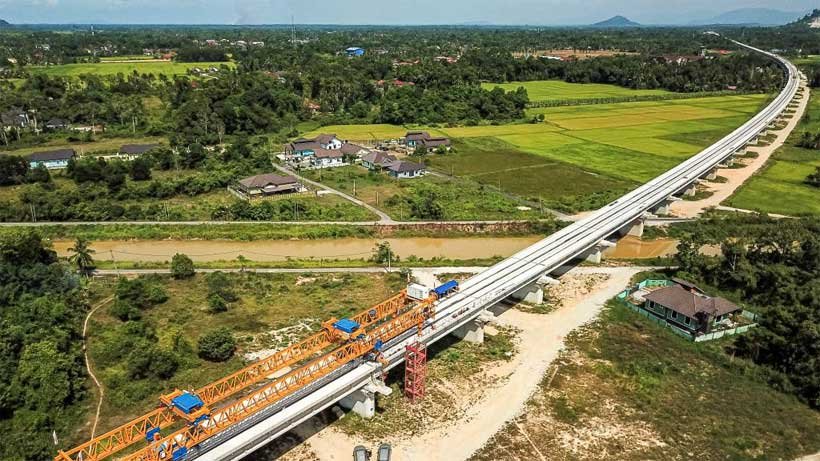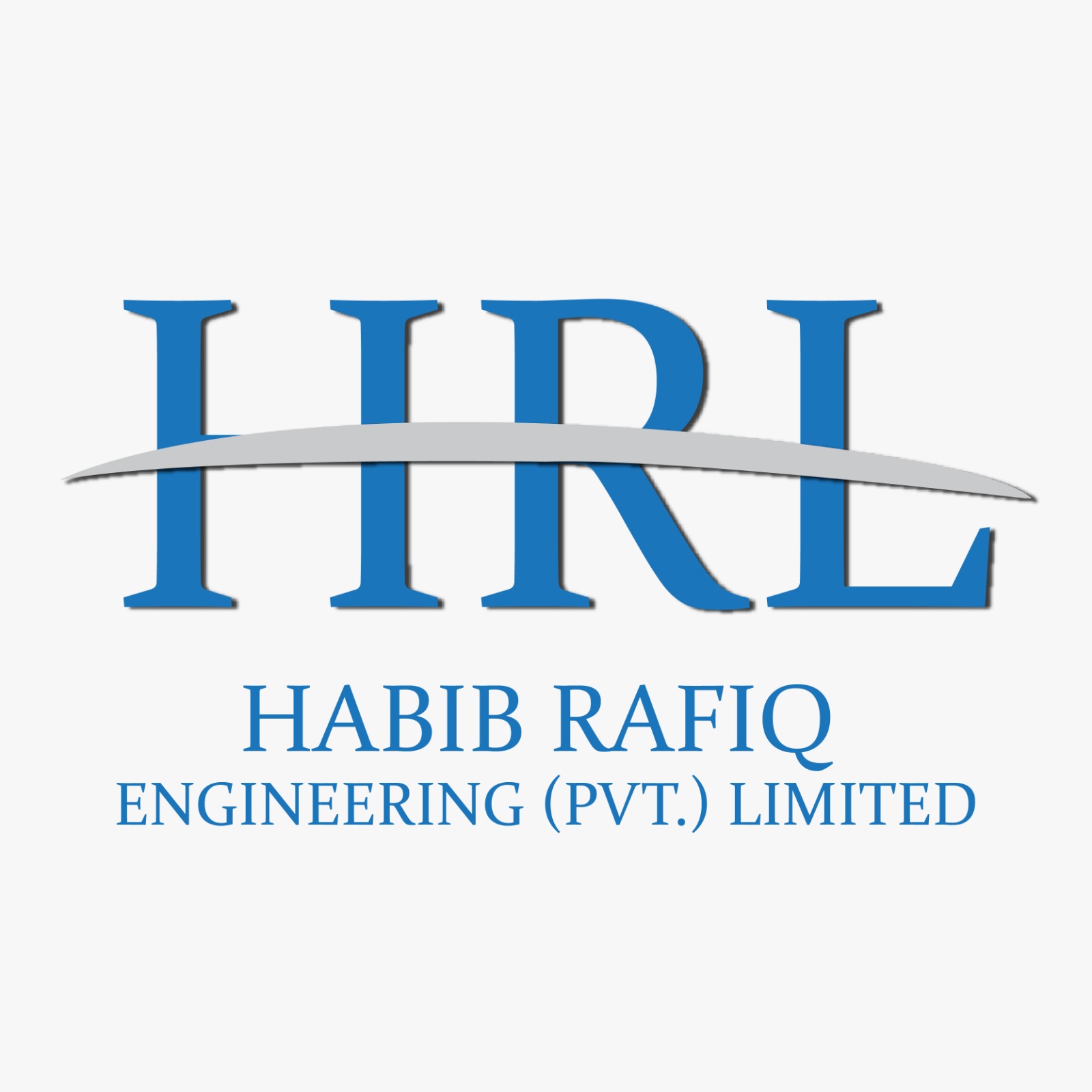A Comprehensive Framework for Sustainable Decision-Making with Far-Reaching Implications
In an increasingly interconnected and complex world, solving one problem often leads to the emergence of new unintended challenges. This phenomenon, known as the problem-solving paradox is evident across various domains including governance, economics and social systems. Governments, businesses and societies frequently implement interventions without fully considering the ripple effects resulting in a cycle of reactive decision-making that fails to address the root causes of issues. To break this cycle, we introduce the Dynamic Process Model (DPM) for Effective Problem-Solving, a knowledge-based methodology designed to resolve complex dynamic problems sustainably.
This article offers a transformative approach to tackling complex challenges, providing governments, decision-makers and institutions with a structured and sustainable framework for effective problem-solving. It is especially dedicated to the nations of Central Asia and developing countries worldwide, where the cycle of randomly made decisions based on simple observations and limited experience can be broken. By introducing the Dynamic Process Model (DPM), this work aims to create an active trend toward knowledge-based methodologies, empowering leaders to move beyond reactive measures. By integrating systems thinking, ethical considerations and adaptive governance, the DPM equips organizations to foster long-term resilience, equity and evidence-driven progress.
Before delving into the methodology and findings of this article, it is important to note that the author has had extensive engagement with various governments and advisory bodies across different countries. Over the years, the author has been deeply involved in both desk and field work, often operating within government houses and collaborating closely with policymakers and advisors. This article is a culmination of insights and final findings derived from these rich and diverse experiences. The practical knowledge gained through these engagements has significantly informed the perspectives and conclusions presented here.
Additionally, the author has studied the practices of several countries that partially employ effective functions similar to those in the DPM. These include Singapore’s Smart Nation Initiative, Estonia’s Digital Transformation, New Zealand’s Wellbeing Budget, Germany’s Energiewende and South Korea’s Green New Deal. By analysing these partial applications of systems thinking, iterative policies, stakeholder engagement and adaptive governance, the author was able to identify strengths, gaps and opportunities for improvement. This study of real-world implementations played a crucial role in developing the comprehensive and robust framework of the DPM.
At its core, the DPM is built on the understanding that every aspect of life is a dynamic process. Whether in governance, economics, social systems or even natural ecosystems change is constant and interactions between variables are complex and often unpredictable. The DPM is the logical realization of this reality providing a structured approach to relate solutions to the processes they aim to influence. By deeply understanding the process, its system dynamics, algorithms and variables, the DPM enables decision-makers to design interventions that are not only effective in the short term but also sustainable in the long term. This model emphasizes the importance of mapping out the flow of influence, identifying key indicators and using algorithmic frameworks to predict and mitigate unintended consequences. In doing so, it shifts the paradigm from reactive problem-solving to proactive process management ensuring that solutions are aligned with the inherent dynamics of the systems they seek to improve.
The DPM also recognizes that traditional linear approaches to problem-solving are insufficient in today’s interconnected world. Linear models often fail to account for feedback loops, emergent behaviours and the adaptive nature of complex systems. In contrast, the DPM embraces complexity by integrating tools such as systems thinking, root cause analysis and scenario planning. This holistic approach ensures that decision-makers are equipped to navigate uncertainty and adapt to evolving challenges.
Furthermore, the DPM emphasizes the importance of ethical considerations and equity in decision-making. In a world where policies often disproportionately impact vulnerable populations, the DPM provides a framework for ensuring fairness and inclusivity. By incorporating stakeholder input and ethical impact assessments, the model ensures that solutions are not only effective but also just and equitable.
The DPM emphasizes understanding system dynamics, variables, indicators and algorithmic frameworks within problem-solving structures. By adopting this model decision-makers can transition from reactive to proactive approaches, minimizing unintended consequences and achieving long-term sustainable results. This article explores the core components of the DPM, its theoretical foundations and practical applications providing a roadmap for effective problem-solving in complex systems.

Core Framework of the Dynamic Process Model
1. Systems Thinking: Understanding Interconnections
Systems thinking is the cornerstone of the DPM. It involves analysing how different variables interact within a larger framework ensuring that solutions do not inadvertently create negative effects in interconnected areas. In complex systems, every component is part of a dynamic process and interventions must account for these interdependencies to avoid unintended consequences.
Key Components in System Dynamics (SD):
Nature of the Process: Understanding the dynamic composition, direction and intensity of a process.
Flow of Influence: Recognizing how inputs, outputs and feedback loops shape outcomes.
Effective Range: Identifying the reach and consequences of interventions.
Example: The War on Terror
After the 9/11 attacks, the U.S. launched the War on Terror to eliminate extremist threats. While initial objectives were achieved, the intervention created power vacuums that led to the rise of groups like ISIS prolonged regional instability and increased radicalization. A systems-thinking approach would have anticipated these second- and third-order effects enabling the design of policies that accounted for broader geopolitical dynamics.
Example: Urban Planning and Traffic Congestion
In many cities, efforts to reduce traffic congestion by building more roads have led to unintended consequences such as increased urban sprawl and higher vehicle emissions. A systems-thinking approach would consider the interconnections between transportation, land use and environmental sustainability. For instance, investing in public transportation and promoting mixed-use development can reduce the need for car travel addressing congestion while also mitigating environmental impacts.
Implementation in DPM:
Policy Impact Models: Use AI-driven simulations to visualize the potential ripple effects of policies before implementation.
Dynamic System Mapping: Create detailed maps of system components and their interactions to identify potential unintended consequences.
Stakeholder Engagement: Involve diverse stakeholders to gain a comprehensive understanding of the system and its interdependencies.
2. Root Cause Analysis: Addressing Deeper Issues
Many interventions fail because they address symptoms rather than root causes. Root cause analysis ensures that foundational issues are identified and resolved preventing problems from recurring in new forms. The DPM categorizes variables into:
Internal Variables: Factors within the system that influence its operations.
External Variables: Root causes, triggers and catalysts that interface with the system.
Example: The War on Drugs
The U.S. War on Drugs focused on criminalizing drug users but the underlying issues like poverty, mental health and lack of education were ignored. In contrast, Portugal decriminalized drug use and invested in rehabilitation and education leading to a significant reduction in addiction rates and related crime.
Example: Healthcare and Chronic Disease Management
In healthcare, treating the symptoms of chronic diseases such as diabetes without addressing the root causes (e.g., poor diet, lack of exercise) leads to recurring health issues and increased healthcare costs. A root cause analysis approach would focus on preventive measures such as promoting healthy lifestyles, improving access to nutritious food and encouraging physical activity thereby reducing the incidence of chronic diseases.
Implementation in DPM:
“5 Whys” Analysis: A technique that involves repeatedly asking “Why?” to trace a problem back to its root cause.
Preventive Policy Design: Develop policies that address the root causes of problems rather than their symptoms.
Variable Confirmation: Ensure that all variables contributing to the problem are accurately identified and addressed.
3. Mapping Variables Through Indicators
Variables in a system contribute to the formation of indicators, measurable signals that reflect the state of a process. Indicators help map the problem structure accurately and guide decision-making.
Types of Indicators in DPM:
Master Indicators: Early warning signals that provide insights into the initial stages of a problem.
Daughter Indicators: Signals that emerge as the problem evolves, providing additional insights.
Hybrid Indicators: Complex signals resulting from the interaction of multiple variables requiring careful validation.
Example: Economic Inflation
Inflation is influenced by multiple variables such as supply chain disruptions, consumer spending and monetary policies. By mapping these variables through indicators, policymakers can develop targeted interventions to manage inflation effectively. For instance, if supply chain disruptions are identified as a key driver of inflation, policies can be designed to improve supply chain resilience.
Implementation in DPM:
Indicator Checklists: Develop systematic assessments to validate indicators and ensure their accuracy.
Categorization Models: Classify indicators based on their role in the evolution of the problem.
Algorithmic Validation: Use algorithms to map indicators back to their originating variables ensuring data-driven decision-making.
4. Iterative Policies: Gradual Adjustments and Testing
Large-scale policy implementations often fail due to a lack of testing and refinement. The DPM advocates for an iterative approach allowing for small-scale experimentation, assessment and refinement before full implementation.
Key Algorithmic Rules in DPM:
Purely Numerical (Level I – Strong): Computational problem-solving using data and simulations.
Logical-Based (Level II – Medium): Decision-making using structured reasoning and adaptive frameworks.
Situational (Level III – Low): On-ground adaptations based on real-time variables.
Example: Education Reforms
In education, pilot testing new teaching methods or curricula in a few schools before scaling them up allows educators to identify potential issues and make necessary adjustments. This iterative approach ensures that the final policy is effective and well-suited to the needs of students and teachers.
Implementation in DPM:
Pilot Testing: Start with small-scale programs to test the effectiveness of policies.
Feedback Loops: Continuously refine policies based on real-world data and feedback.
Decision Trees: Use structured pathways to guide actions based on input variables and feedback.
5. Scenario Planning: Preparing for Unintended Consequences
Every decision has secondary and tertiary effects. Scenario planning helps anticipate these effects enabling decision-makers to mitigate risks before they escalate into crises.
Example: Climate Change and Renewable Energy Policies
When implementing renewable energy policies, scenario planning can help anticipate potential challenges such as grid instability, resource shortages and economic impacts. By developing contingency plans and mitigation strategies policymakers can ensure that renewable energy policies are effective and resilient.
Implementation in DPM:
AI-Powered Policy Simulations: Use AI-driven simulations to test different scenarios and anticipate potential consequences.
Risk Matrices: Develop risk matrices to assess the potential impact of different scenarios and prioritize mitigation strategies.
Indicator Confirmation: Differentiate between master indicators (detected early) and daughter indicators (emerging later) to anticipate and mitigate second-order consequences.
6. Stakeholder Input: Incorporating Diverse Perspectives
Policies designed without input from diverse stakeholders often miss critical insights and face resistance upon implementation. Engaging multiple perspectives leads to more holistic and effective solutions.
Example: Urban Development and Community Engagement
In urban development projects engaging with local communities, businesses and environmental groups ensures that the project meets the needs of all stakeholders. This inclusive approach helps prevent conflicts and ensures that the project is sustainable and beneficial for all.
Implementation in DPM:
Multi-Stakeholder Councils: Establish councils that include representatives from diverse stakeholder groups.
Crowdsourced Solutions: Use digital platforms to gather input and ideas from a broad audience.
Categorization of Knowledge: Structure decision-making based on the integration of experience, knowledge banks, and process models.
7. Adaptive Governance: Flexibility in Decision-Making
In a rapidly changing world, rigid policies often fail to address evolving challenges. Adaptive governance emphasizes flexibility allowing decision-makers to adjust policies in response to new information and changing circumstances.
Example: COVID-19 Pandemic Response
During the COVID-19 pandemic, governments that adopted adaptive governance approaches were able to respond more effectively to the rapidly changing situation. By continuously monitoring the spread of the virus and adjusting policies such as lockdowns, travel restrictions and vaccination campaigns, these governments were able to mitigate the impact of the pandemic.
Implementation in DPM:
Real-Time Monitoring: Use data analytics to track the effectiveness of policies and make adjustments as needed.
Dynamic Policy Frameworks: Develop policies that can be modified based on feedback and new insights.
Resilience Building: Design systems that can withstand and adapt to unforeseen disruptions
8. Ethical Considerations: Ensuring Fairness and Equity
Policies must not only be effective but also fair and equitable. Ethical considerations ensure that interventions do not disproportionately affect vulnerable populations and that benefits are distributed justly.
Example: Affordable Housing Policies
In designing affordable housing policies, ethical considerations ensure that the needs of low-income families, marginalized communities and vulnerable populations are addressed. This includes ensuring that housing is accessible, affordable and located in areas with access to essential services.
Implementation in DPM:
Equity Impact Assessments: Evaluate the potential effects of policies on different demographic groups.
Inclusive Policy Design: Ensure that the voices of marginalized communities are heard and considered.
Transparency and Accountability: Maintain open communication about decision-making processes and outcomes.
9. Knowledge Integration: Leveraging Expertise and Data
Effective problem-solving requires the integration of diverse knowledge sources including scientific research, historical data and expert opinions. The DPM emphasizes the importance of synthesizing this information to inform decision-making.
Example: Climate Change and Renewable Energy
In addressing climate change, knowledge integration involves synthesizing data from climate scientists, energy experts and economists to develop effective renewable energy policies. This ensures that policies are based on the best available evidence and are effective in reducing greenhouse gas emissions.
Implementation in DPM:
Knowledge Repositories: Create centralized databases that store relevant information and insights.
Expert Panels: Convene panels of specialists to provide guidance on complex issues.
Data-Driven Decision-Making: Use empirical evidence to support policy choices and validate outcomes.
10. Continuous Learning: Building Institutional Memory
Organizations and governments must learn from past experiences to improve future decision-making. Continuous learning involves documenting lessons learned, analysing successes and failures and updating policies accordingly.
Example: Disaster Response and Recovery
In disaster response, continuous learning involves analysing the effectiveness of response efforts and updating disaster management plans based on lessons learned. This ensures that future responses are more effective and resilient.
Implementation in DPM:
After-Action Reviews: Conduct thorough evaluations of policy implementations to identify what worked and what didn’t.
Learning Platforms: Develop platforms for sharing knowledge and best practices across organizations.
Iterative Improvement: Use insights from past experiences to refine and enhance future policies.
Examples of Countries Using Similar Models
1. Singapore’s Smart Nation Initiative
Singapore’s Smart Nation Initiative is a prime example of a government adopting a systems-thinking approach to problem-solving. The initiative integrates technology, data and citizen engagement to address urban challenges such as transportation, healthcare and sustainability.
Key Components Aligned with DPM:
Systems Thinking: The initiative considers the interconnections between various urban systems ensuring that solutions in one area do not negatively impact others.
Iterative Policies: Pilot projects are launched to test new technologies and policies before scaling them up.
Stakeholder Input: Citizens are actively involved in the decision-making process through digital platforms and feedback mechanisms.
Continuous Learning: The government regularly reviews and updates its policies based on data and citizen feedback.
Outcomes
Improved public transportation efficiency through real-time data analytics.
Enhanced healthcare services with telemedicine and health monitoring technologies.
Increased citizen satisfaction and engagement in governance.
2. Estonia’s Digital Transformation
Estonia’s digital transformation often referred to as e-Estonia is a comprehensive approach to governance that leverages technology to improve public services and citizen engagement.
Key Components Aligned with DPM:
Root Cause Analysis: Estonia identified inefficiencies in traditional governance as a root cause of many issues and addressed them through digital solutions.
Iterative Policies: The government implemented digital services incrementally starting with small-scale projects and expanding based on success.
Scenario Planning: Estonia anticipated potential cybersecurity threats and implemented robust measures to mitigate risks.
Continuous Learning: The government continuously updates its digital infrastructure based on technological advancements and user feedback.
Outcomes
Streamlined public services, including e-residency, digital signatures and online voting.
Increased transparency and efficiency in government operations.
Enhanced cybersecurity and data protection measures.
3. New Zealand’s Wellbeing Budget
New Zealand’s Wellbeing Budget represents a shift from traditional economic metrics to a holistic approach that considers the well-being of citizens and the environment.
Key Components Aligned with DPM:
Systems Thinking: The budget considers the interconnections between economic, social and environmental factors.
Root Cause Analysis: Policies are designed to address underlying issues such as mental health, child poverty and climate change.
Stakeholder Input: The government engaged with various stakeholders including indigenous communities, to ensure inclusive policy design.
Ethical Considerations: The budget prioritizes equity and sustainability ensuring that benefits are distributed fairly.
Outcomes
Improved mental health services and reduced child poverty rates.
Increased investment in sustainable infrastructure and environmental protection.
Enhanced overall well-being and quality of life for citizens.
4. Germany’s Energiewende (Energy Transition)
Germany’s Energiewende is a long-term plan to transition from fossil fuels and nuclear energy to renewable energy sources.
Key Components Aligned with DPM:
Scenario Planning: The government anticipated challenges such as grid instability and economic impacts developing strategies to mitigate these risks.
Stakeholder Input: The policy involved extensive consultation with industry leaders, environmental groups and local communities.
Adaptive Governance: The government continuously monitors the progress of the transition and adjusts policies as needed.
Outcomes
Significant increase in renewable energy production, particularly wind and solar power.
Reduction in greenhouse gas emissions and reliance on fossil fuels.
Enhanced energy security and sustainability.
5. South Korea’s Green New Deal
South Korea’s Green New Deal is a comprehensive policy framework aimed at achieving carbon neutrality by 2050 while promoting economic growth and social equity.
Key Components Aligned with DPM:
Systems Thinking: The policy considers the interconnections between environmental sustainability, economic growth and social equity.
Iterative Policies: The government implements pilot projects to test new technologies and policies before scaling them up.
Ethical Considerations: The policy prioritizes equity ensuring that the benefits of the green transition are distributed fairly.
Outcomes
Increased investment in renewable energy and green technologies.
Creation of new jobs in the green economy.
Enhanced social equity and environmental sustainability.
Final Model: A Self-Regulating System for Smarter Governance
The DPM integrates the ten core functions into a continuous cycle of proactive problem-solving:
- Systems Thinking: Understand interconnections and unintended effects.
- Root Cause Analysis: Address foundational issues instead of symptoms.
- Mapping of Variables via Indicators: Ensure accurate data-driven decision-making.
- Iterative Policies: Test and refine policies before full-scale implementation.
- Scenario Planning: Anticipate and mitigate second-order consequences.
- Stakeholder Input: Incorporate diverse perspectives for balanced solutions.
- Adaptive Governance: Maintain flexibility to respond to changing circumstances.
- Ethical Considerations: Ensure fairness and equity in policy design.
- Knowledge Integration: Leverage expertise and data for informed decision-making.
- Continuous Learning: Build institutional memory to improve future policies.
By embedding these principles into decision-making, governments and organizations can break the cycle of reactive crisis management and move towards sustainable long-term solutions.
The Dynamic Process Model in Practice: A Self-Regulating Cycle for Proactive Governance
The Dynamic Process Model (DPM) transcends being a mere checklist; it is an integrated, cyclical framework designed to transform governance from a reactive discipline into a proactive self-regulating system. By weaving together ten core functions into a continuous feedback loop, the DPM enables governments and organizations to navigate complexity, anticipate consequences and build sustainable solutions. This section elaborates on the theoretical underpinnings and practical flow of this model detailing how each component logically feeds into the next to create a resilient system for smarter decision-making particularly vital for Central Asian and developing nations seeking to institutionalize knowledge-based methodologies.
The Cyclical Flow of the DPM
The process begins with the identification of a complex problem and proceeds through the following interconnected stages:
1. Systems Thinking: The Foundational Lens
Function: Analyse interconnections and unintended effects within the system.
Theoretical Elaboration: Drawing from the work of thinkers like Donella Meadows, this step requires understanding a problem not in isolation but as part of a dynamic network. Every component be it social, economic or environmental is part of a larger process with feedback loops and emergent behaviours. The core task is to map these relationships to foresee how an intervention in one area might create ripple effects positive or negative in another. This holistic view prevents the common pitfall of solving one problem only to create several new ones.
Output: A holistic understanding of the problem and its context.
Next Step: Move to Root Cause Analysis.
2. Root Cause Analysis: Delving Beneath the Surface
Function: Identify and address foundational issues rather than symptoms.
Theoretical Elaboration: Informed by methodologies like the “5 Whys” from the Toyota Production System, this phase moves beyond superficial manifestations to uncover the underlying drivers of a problem. It challenges decision-makers to distinguish between internal variables (within the system’s control) and external root causes, triggers and catalysts. By focusing resources on these foundational issues, policies can achieve transformative change rather than temporary relief breaking cycles of recurring crises.
Output: A clear understanding of the root causes of the problem.
Next Step: Proceed to Mapping of Variables via Indicators.
3. Mapping of Variables via Indicators: Quantifying the System
Function: Use data-driven indicators to map variables and validate their impact.
Theoretical Elaboration: This step operationalizes the insights from the previous stages by defining measurable signals. Variables identified through systems thinking and root cause analysis are tracked using master indicators (early warnings), daughter indicators (emerging signals) and hybrid indicators (complex interactions). This creates a data-driven map of the problem’s structure allowing for objective tracking and validation ensuring that decisions are based on empirical reality rather than assumption.
Output: Accurate identification of key variables and their relationships.
Next Step: Transition to Iterative Policies.
4. Iterative Policies: Learning by Doing
Function: Test and refine policies on a small scale before full implementation.
Theoretical Elaboration: Rejecting the high-risk model of large-scale untested policy rollouts, the DPM adopts an agile iterative approach. Inspired by pilot-testing methodologies in program evaluation, this involves implementing policies in controlled, small-scale settings. These “policy prototypes” are then assessed and refined based on real-world feedback and data. This evidence-based process minimizes waste, builds public confidence and ensures that the final scaled-up policy is robust and effective.
Output: Evidence-based policies that are effective and adaptable.
Next Step: Move to Scenario Planning.
5. Scenario Planning: Anticipating the Unintended
Function: Anticipate and mitigate second- and third-order consequences.
Theoretical Elaboration: Building on the tools of strategic foresight, this step uses the mapped variables and indicator data to model potential futures. Through techniques like AI-powered simulations and risk matrices, decision-makers can explore “what-if” scenarios. This allows them to identify potential negative side-effects of a policy before they escalate into full-blown crises and to develop pre-emptive contingency plans thereby building resilience against unforeseen disruptions.
Output: Contingency plans and risk mitigation strategies.
Next Step: Proceed to Stakeholder Input.
6. Stakeholder Input: Incorporating Collective Intelligence
Function: Incorporate diverse perspectives to ensure balanced and inclusive solutions.
Theoretical Elaboration: Grounded in principles of participatory governance and deliberative democracy, this function recognizes that those affected by a policy hold critical knowledge about its potential impact. By formally engaging a wide range of stakeholders from community groups and industry leaders to marginalized populations through councils or digital platforms, policies gain legitimacy, uncover blind spots and synthesize a wider array of solutions leading to more holistic and publicly accepted outcomes.
Output: Policies that reflect the needs and insights of all stakeholders.
Next Step: Transition to Adaptive Governance.
7. Adaptive Governance: Embracing Flexibility
Function: Maintain flexibility to adjust policies in response to changing circumstances.
Theoretical Elaboration: In a rapidly changing world, rigid policies fail. Adaptive governance, a concept central to managing social-ecological systems emphasizes flexibility and learning. It involves creating institutional structures and policy frameworks that are designed to be modified. Through real-time monitoring and dynamic feedback mechanisms decision-makers can continuously adjust policies in response to new information, emerging trends and unexpected outcomes ensuring long-term relevance and effectiveness.
Output: Resilient and responsive governance structures.
Next Step: Move to Ethical Considerations.
8. Ethical Considerations: Anchoring Policies in Justice
Function: Ensure fairness, equity and justice in policy design and implementation.
Theoretical Elaboration: Informed by frameworks like John Rawls’ theory of justice, this step mandates a formal evaluation of a policy’s distributive effects. It involves conducting Equity Impact Assessments to ensure that the policy does not disproportionately burden vulnerable populations and that its benefits are distributed fairly. This transforms equity from an afterthought into a core design principle fostering social cohesion and ensuring that progress is just and inclusive.
Output: Policies that are ethically sound and socially responsible.
Next Step: Proceed to Knowledge Integration.
9. Knowledge Integration: Synthesizing Wisdom
Function: Leverage expertise, data and historical knowledge for informed decision-making.
Theoretical Elaboration: Effective problem-solving requires synthesizing disparate knowledge sources. This function, echoing the concept of the “knowledge-creating company,” involves systematically integrating scientific research, historical data, local wisdom and expert opinions. By creating centralized knowledge repositories and convening expert panels, decision-makers can ensure their actions are grounded in the best available evidence avoiding the repetition of past mistakes and leveraging proven best practices.
Output: Policies grounded in evidence and best practices.
Next Step: Transition to Continuous Learning.
10. Continuous Learning: Building Institutional Memory
Function: Build institutional memory by documenting lessons learned and updating policies.
Theoretical Elaboration: This final step closes the loop embedding a culture of learning within the organization. Through after-action reviews and structured reflection, successes and failures are systematically documented and analysed. This creates a valuable institutional memory ensuring that valuable insights from past implementations are captured and used to refine future policies and problem-solving capabilities preventing the recurrence of errors and fostering a trajectory of constant improvement.
Output: Improved future policies and enhanced problem-solving capabilities.
Next Step: Loop back to Systems Thinking for the next cycle.
The Far-Reaching Implications of the Dynamic Process Model:
A New Lens for a Complex World
The Dynamic Process Model (DPM) is not merely a policy tool; it is a paradigm for navigating complexity. By shifting the focus from solving discrete problems to managing dynamic processes, its implications are profound and universal. The following outlines its transformative potential across the major domains of life.
1. Governance and Public Policy
This is the DPM’s primary domain, with implications for every level of government.Legislative Process: Legislation would be drafted as “adaptive code.” Laws would include built-in sunset clauses, mandatory review periods and key performance indicators (Master and
Daughter Indicators) to trigger automatic reassessment. For example, a tax law would be designed with real-time economic indicators feeding into a model that suggests adjustments to rates or brackets moving away from rigid politically fraught overhauls every decade.
Inter-Agency Collaboration: The DPM forces a break from departmental silos. A public health initiative would be co-designed with input from transportation, education and housing agencies (Systems Thinking) ensuring a campaign against obesity, for instance considers walkable cities, school lunch programs and access to fresh food.
Crisis Management: The model transforms crisis response from panicked reaction to disciplined execution of pre-tested scenarios. Pandemic response plans, for instance would be living documents continuously updated (Continuous Learning) with protocols that automatically adapt (Adaptive Governance) based on real-time data on transmission rates, hospital capacity and variant virulence.
Public Trust and Accountability: The transparent, iterative and stakeholder-informed nature of the DPM rebuilds public trust. Citizens can see the evidence for policies, participate in their refinement and witness a government that learns from its mistakes creating a virtuous cycle of engagement and legitimacy.
2. Economic Systems and Business Management
The DPM redefines strategy and operations in the volatile global economy.
Corporate Strategy: The annual static business plan becomes obsolete. Strategy becomes a continuous dynamic process. Companies would use Scenario Planning to simulate market disruptions (new competitors, supply chain collapse, regulatory changes) and have pre-developed strategic pivots. Root Cause Analysis would be used to understand not just a quarterly earnings miss but the underlying reasons (e.g., a failing company culture or outdated technology stack).
Product Development and Innovation: The “waterfall” model of development is replaced by a true DPM cycle. Products are launched as minimum viable products (MVPs) (Iterative Policies) with user behaviour serving as the key Indicators. Feedback loops are tight and direct allowing for rapid data-driven refinement. This is the essence of the agile methodology but applied at a strategic corporate level.
Risk Management and Compliance: Instead of a tick-box exercise, risk management becomes a dynamic system. Financial institutions would map the Variables leading to loan defaults (e.g., unemployment, sector health) and use Indicator dashboards for early warning. Compliance would be proactive, using AI-Powered Simulations to test new products for potential ethical or regulatory pitfalls before they are launched.
Organizational Learning and Culture: The DPM institutionalizes a learning culture. After-Action Reviews after major projects, successful or failed, become mandatory. Insights are stored in a Knowledge Repository (a “corporate brain”) that is actively used to inform future decisions, preventing the recurrence of past errors and accelerating organizational competence.
3. Healthcare and Medicine
The DPM shifts the focus from treating sickness to managing health as a continuous process.
Clinical Practice: The model moves medicine towards true “precision health.” A patient’s health is viewed as a dynamic system. Data from wearables, genetic screenings and lifestyle apps form a suite of Master Indicators. Interventions (lifestyle, pharmaceutical) are treated as Iterative Policies tested, monitored and adjusted based on the patient’s individual response moving away from the one-size-fits-all protocol.
Public Health: Campaigns become sophisticated system interventions. To combat diabetes, a DPM approach wouldn’t just tell people to eat better. It would use Systems Thinking to model food deserts, agricultural subsidies, advertising laws and urban design. Stakeholder Input would engage communities to design culturally appropriate solutions. Ethical Considerations would ensure interventions don’t stigmatize or exclude vulnerable groups.
Hospital and Healthcare System Management: Patient flow, resource allocation and staffing become dynamic optimization problems. Real-time data (Mapping Variables) on admission rates, surgery durations and staff availability feed into predictive models that allow for proactive adjustments reducing wait times and improving care quality (Adaptive Governance).
4. Education and Lifelong Learning
The DPM transforms education from an industrial-age institution to a personalized adaptive learning system.
Curriculum and Pedagogy: The static curriculum is replaced by a dynamic learning journey. Iterative Policies would see teaching methods and materials constantly A/B tested in classrooms. Student engagement and comprehension metrics (Daughter Indicators) would trigger automatic adjustments in teaching pace or style.
Student Assessment: The focus shifts from summative high-stakes testing (a symptom of performance) to formative continuous assessment that diagnoses the Root Cause of learning gaps be it pedagogical, social or cognitive allowing for timely personalized interventions.
Educational Policy and Institutional Management: School systems would use Scenario Planning to prepare for futures with different skill demands. Stakeholder Input would systematically include students, parents and future employers in designing learning outcomes. The entire system would be geared towards Continuous Learning for both students and educators.
5. Environmental Management and Sustainability
The DPM is inherently suited to managing complex social-ecological systems.
Ecosystem Management: Conservation is not about preserving a static state but managing a dynamic process. Managers would track ecological Indicators (species populations, water quality) to understand the “health” of the system. Interventions (like controlled burns or species reintroduction) are treated as iterative experiments closely monitored and adapted based on the system’s response.
Climate Change Mitigation and Adaptation: Climate policies are notoriously complex. The DPM provides a structure. Systems Thinking maps the interconnections between energy, transportation, agriculture and economics. Iterative Policies allow for piloting carbon capture technologies or regional carbon pricing schemes. Scenario Planning is essential for developing resilient infrastructure for different climate futures (e.g., sea-level rise, drought frequency).
Circular Economy Transition: Moving from a linear “take-make-dispose” model to a circular one is a massive systemic shift. The DPM would be used to map material flows (Systems Thinking) identify key leverage points (Root Cause Analysis of waste) and pilot new business models and regulations (Iterative Policies) while using Stakeholder Input to ensure a just transition for workers in traditional industries.
6. Personal Life and Development
The principles of the DPM can be internalized for personal growth and well-being.
Career Management: Instead of a linear career ladder, one manages a “portfolio of skills and experiences.” You use Systems Thinking to understand how industry trends, your network and your skills interact. You engage in Iterative Policies by taking on small projects or courses to test new career directions. You practice Continuous Learning by reflecting on successes and failures to guide your next steps.
Health and Fitness: You move beyond fad diets. You see your body as a complex system. You track key Indicators (sleep, energy, mood, body composition) to understand how variables (diet, exercise, stress) affect you. You Iterate on your nutrition and workout plans based on the feedback. You do Root Cause Analysis on lack of energy, is it sleep, nutrition or overtraining?
Relationships and Family Dynamics: The DPM fosters a proactive approach to relationships. Families can hold “after-action reviews” after a conflict or a vacation to learn what worked and what didn’t. Couples can use Stakeholder Input to ensure both partners’ needs are heard and use Iterative approaches to find mutually satisfactory solutions to recurring issues breaking destructive cycles.
7. International Relations and Geopolitics
The DPM offers a framework for navigating the most complex system of all: global politics.
Conflict Resolution and Diplomacy: Interventions would be based on a deep Root Cause Analysis of conflicts addressing historical grievances, resource scarcity and identity politics not just signing a ceasefire. Scenario Planning would be used extensively to anticipate how peacekeeping missions or sanctions might create power vacuums or unintended humanitarian crises.
Global Governance and Treaties: International agreements (on trade, climate, non-proliferation) would be designed as adaptive frameworks. They would include built-in review conferences, scientific assessment panels (Knowledge Integration) and mechanisms for updating commitments based on changing circumstances (Adaptive Governance) making them more resilient and effective.
Conclusion: The DPM as a Cultural Shift
The comprehensive implication of the Dynamic Process Model is ultimately a cultural and cognitive shift. It requires moving from:
- Static to Dynamic thinking.
- Linear to Cyclical processes.
- Reactive to Proactive postures.
- Reductionist to Holistic understanding.
- Expert-Dominated to Collective Intelligence-driven action.
Adopting the DPM means embracing humility, accepting uncertainty and committing to lifelong learning. It is a blueprint not just for smarter governance or more effective business but for building a more resilient, adaptive and equitable society capable of thriving amidst the complexity of the modern world.
Final Conclusion of the DPM Cycle
The DPM does not have a true endpoint. As new problems emerge or existing ones evolve, the cycle repeats ensuring continuous improvement and proactive governance. By embedding this self-regulating system, governments and organizations can decisively break the cycle of reactive crisis management and move confidently towards sustainable long-term solutions creating a virtuous cycle of improvement and resilience.
The Dynamic Process Model for Effective Problem-Solving provides a structured framework that enhances decision-making efficiency and prevents the creation of new crises. By embracing systems thinking, root cause analysis, iterative policies, scenario planning, stakeholder engagement, adaptive governance, ethical considerations, knowledge integration, and continuous learning leaders can craft policies that not only solve immediate challenges but also ensure long-term stability, sustainability and success. In an era defined by complexity and uncertainty, the DPM offers a roadmap for smarter governance and more effective problem-solving. The success stories of Singapore, Estonia, New Zealand, Germany and South Korea demonstrate the potential of adopting a holistic, dynamic approach to governance providing valuable lessons for other nations and organizations striving for sustainable development.
References, Theoretical Foundations and Frameworks
- Systems Thinking
Meadows, D. H. (2008). Thinking in Systems: A Primer. Chelsea Green Publishing.
Sterman, J. D. (2000). Business Dynamics: Systems Thinking and Modelling for a Complex World. McGraw-Hill.
Checkland, P. (1999). Systems Thinking, Systems Practice. Wiley.
- Root Cause Analysis
Wilson, P. F., Dell, L. D., & Anderson, G. F. (1993). Root Cause Analysis: A Tool for Total Quality Management. ASQ Quality Press.
Ohno, T. (1988). Toyota Production System: Beyond Large-Scale Production. Productivity Press.
- Scenario Planning
Schoemaker, P. J. H. (1995). Scenario Planning: A Tool for Strategic Thinking. Sloan Management Review.
Schwartz, P. (1991). The Art of the Long View: Planning for the Future in an Uncertain World. Doubleday.
- Adaptive Governance
Folke, C., Hahn, T., Olsson, P., & Norberg, J. (2005). Adaptive Governance of Social-Ecological Systems. Annual Review of Environment and Resources.
Dietz, T., Ostrom, E., & Stern, P. C. (2003). The Struggle to Govern the Commons. Science.
- Ethical Considerations in Policy Design
Rawls, J. (1971). A Theory of Justice. Harvard University Press.
Sen, A. (2009). The Idea of Justice. Harvard University Press.
- Knowledge Integration and Continuous Learning
Nonaka, I., & Takeuchi, H. (1995). The Knowledge-Creating Company: How Japanese Companies Create the Dynamics of Innovation. Oxford University Press.
Argyris, C., & Schön, D. A. (1978). Organizational Learning: A Theory of Action Perspective. Addison-Wesley.
Case Studies and Real-World Applications
- Singapore’s Smart Nation Initiative
Tan, S. Y., & Taeihagh, A. (2020). Smart City Governance in Developing Countries: A Systematic Literature Review. Sustainability.
Kankanhalli, A., Charalabidis, Y., & Mellouli, S. (2019). IoT and AI for Smart Government: A Research Agenda. Government Information Quarterly.
- Estonia’s Digital Transformation
Kalvet, T. (2012). Innovation: A Factor Explaining e-Government Success in Estonia. Electronic Government.
OECD (2019). Digital Government Review of Estonia: Towards a Digitally Transformed Government. OECD Publishing.
- New Zealand’s Wellbeing Budget
Dalziel, P., Saunders, C., & Saunders, J. (2018). Wellbeing Economics: The Capabilities Approach to Prosperity. Palgrave Macmillan.
New Zealand Treasury (2019). The Wellbeing Budget. New Zealand Government.
- Germany’s Energiewende
BMU (Federal Ministry for the Environment, Nature Conservation and Nuclear Safety) (2020). The Energy Transition in Germany. BMU.
Grunwald, A. (2018). The Energy Transition in Germany: A Case Study. Springer.
- South Korea’s Green New Deal
Kim, S. E., & Thurbon, E. (2021). South Korea’s Green New Deal: A Model for Sustainable Development? East Asia Forum.
Lee, J., & Lim, S. (2020). The Green New Deal in South Korea: Policy Design and Implementation Challenges. Journal of Environmental Policy & Planning.
- The War on Terror and Unintended Consequences
Cronin, A. K. (2009). How Terrorism Ends: Understanding the Decline and Demise of Terrorist Campaigns. Princeton University Press.
Jones, S. G., & Libicki, M. C. (2008). How Terrorist Groups End: Lessons for Countering al Qa’ida. RAND Corporation.
- Urban Planning and Traffic Congestion
Newman, P., & Kenworthy, J. (1999). Sustainability and Cities: Overcoming Automobile Dependence. Island Press.
Bertolini, L., Le Clercq, F., & Kapoen, L. (2005). Sustainable Accessibility: A Conceptual Framework to Integrate Transport and Land Use Plan-Making. Transport Policy.
- Healthcare and Chronic Disease Management
Finkelstein, E. A., Trogdon, J. G., Cohen, J. W., & Dietz, W. (2009). Annual Medical Spending Attributable to Obesity: Payer- and Service-Specific Estimates. Health Affairs.
Wagner, E. H. (1998). Chronic Disease Management: What Will It Take to Improve Care for Chronic Illness?. Effective Clinical Practice.
- COVID-19 Pandemic Response
Hale, T., Angrist, N., Goldszmidt, R., et al. (2021). A Global Panel Database of Pandemic Policies (Oxford COVID-19 Government Response Tracker). Nature Human Behaviour.
World Health Organization (2020). COVID-19 Strategic Preparedness and Response Plan. WHO.
- Affordable Housing Policies
Desmond, M. (2016). Evicted: Poverty and Profit in the American City. Crown Publishing Group.
Schwartz, A. F. (2014). Housing Policy in the United States. Routledge.
Tools and Methodologies
- AI-Driven Simulations and Policy Impact Models
Bankes, S. C. (2002). Agent-Based Modeling: A Revolution?. Proceedings of the National Academy of Sciences.
Gilbert, N., & Troitzsch, K. G. (2005). Simulation for the Social Scientist. Open University Press.
- Stakeholder Engagement and Crowdsourcing
Bryson, J. M. (2004). What to Do When Stakeholders Matter: Stakeholder Identification and Analysis Techniques. Public Management Review.
Howe, J. (2006). The Rise of Crowdsourcing. Wired Magazine.
- Dynamic System Mapping
Richardson, G. P. (2011). Feedback Thought in Social Science and Systems Theory. Pegasus Communications.
Forrester, J. W. (1961). Industrial Dynamics. MIT Press.
- Iterative Policy Design and Pilot Testing
Sanderson, I. (2002). Evaluation, Policy Learning, and Evidence-Based Policy Making. Public Administration.
Pawson, R., & Tilley, N. (1997). Realistic Evaluation. Sage Publications.
- Equity Impact Assessments
Braveman, P., & Gruskin, S. (2003). Defining Equity in Health. Journal of Epidemiology & Community Health.
Harris-Roxas, B., & Harris, E. (2011). Differing Forms, Differing Purposes: A Typology of Health Impact Assessment. Environmental Impact Assessment Review.
Additional Resources
- Complexity and Decision-Making
Snowden, D. J., & Boone, M. E. (2007). A Leader’s Framework for Decision Making. Harvard Business Review.
Axelrod, R., & Cohen, M. D. (2000). Harnessing Complexity: Organizational Implications of a Scientific Frontier. Free Press.
- Sustainability and Long-Term Planning
Sachs, J. D. (2015). The Age of Sustainable Development. Columbia University Press.
United Nations (2015). Transforming Our World: The 2030 Agenda for Sustainable Development. UN General Assembly.

Renowned expert in the field of counter-radicalisation, known for his extensive work with various governments to solve complex challenges through knowledge based methods and out of box solutions.













